new posts in all blogs
Viewing: Blog Posts Tagged with: how to write, Most Recent at Top [Help]
Results 26 - 50 of 145
How to use this Page
You are viewing the most recent posts tagged with the words: how to write in the JacketFlap blog reader. What is a tag? Think of a tag as a keyword or category label. Tags can both help you find posts on JacketFlap.com as well as provide an easy way for you to "remember" and classify posts for later recall. Try adding a tag yourself by clicking "Add a tag" below a post's header. Scroll down through the list of Recent Posts in the left column and click on a post title that sounds interesting. You can view all posts from a specific blog by clicking the Blog name in the right column, or you can click a 'More Posts from this Blog' link in any individual post.
Do you find deadlines inspiring or stressful?
I have recently set some deadlines for myself for finishing a couple projects. For me, deadlines aren’t inspiring or stressful; they are useful.
One deadline was this weekend, September 15. The last couple days of last week, I realized the deadline was near and, WOW!, did I get working hard on the project. Yes, it was a self-imposed deadline, but that didn’t matter, it was a deadline. I was actually two days late meeting the deadline–September 17–but without the deadline, the project would still be languishing.
One reason it is useful is that it forced me to prioritize this project. At any one time, I might have 5-6 projects ongoing that I could work on. That includes things like writing for this blog, nonfiction projects, freelance projects and a couple fiction projects. What bubbles to the top of my To-Do list is anyone’s guess. Unless, I set a deadline. The self-imposed deadlines help me determine what to do each day or week.
 Deadlines are also useful in fiction. This is the idea of a time bomb that will explode unless the characters accomplish something. There may be a real time bomb if you’re writing a thriller. Or, it may be a deadline such as an event; the character must accomplish such and so before the Halloween party, or the end of school, or before someone finds out something.
Deadlines are also useful in fiction. This is the idea of a time bomb that will explode unless the characters accomplish something. There may be a real time bomb if you’re writing a thriller. Or, it may be a deadline such as an event; the character must accomplish such and so before the Halloween party, or the end of school, or before someone finds out something.
Time bombs and deadlines are useful in fiction because they up the tension. Time is short. How can the characters possibly accomplish everything in such a short time period? They can’t. Except, of course, they do. But not till the timer is at 0:01 seconds left. It’s important to give the reader frequent updates on the time frame, so the tension stays high.
Deadlines–for your writing or in your story–

I am working on a first draft of a story and am reminded of a couple things.
First, you must write the story. You can plan all you want, but the story comes alive in the actual writing. A small thing this week: my main character is afraid of all bugs. That includes insects and anthropods (spiders)–anything that crawls or flies. So, there they are, the Main Character(MC) and Best Friend (BF) sitting in art class and painting. Guess what the BF paints? An anteater! It’s a perfect addition to the story but I hadn’t planned on it. It came about simply because I wrote the first draft of the first chapter. And there it was.
We don’t know what we think until we write.
We don’t know what the story is until we write.
It’s like sports. You can predict who will win or lose a game, but the teams must still play the game. And there are always surprises.
Write your story. It will surprise you.

The second thing that is happening is not as nice. The story is boring.
I am still feeling my way through the story to find the line of tension, the exciting bits. I’ll keep writing even if it’s boring, because I am digging up anteaters. To use another bug metaphor, I’ve spun a web and I am sitting like a spider monitoring the web for the slightest hint of movement. When the movement–or story excitement–happens, I’ll be ready to pounce. It’s called trusting the process. It’s the most exciting and satisfying thing about writing, when a story comes together on many levels. It’s also scary: I KNOW this is a boring chapter, too full of static action and talking heads. I KNOW it’s bad. I could throw up my hands and just quit. Instead, I’ll plod along and write through the problems until I find something exciting. I can delete this boring chapter later (and, I will!). For now, I am trusting the writing process to get me to a stronger story. And it will.



START YOUR NOVEL
Six Winning Steps Toward a Compelling Opening Line, Scene and Chapter

- 29 Plot Templates
- 2 Essential Writing Skills
- 100 Examples of Opening Lines
- 7 Weak Openings to Avoid
- 4 Strong Openings to Use
- 3 Assignments to Get Unstuck
- 7 Problems to Resolve
The Math adds up to one thing: a publishable manuscript.
Download a sample chapter on your Kindle.
On my current WIP novel, I am revising to make sure the character relationships are consistent. The main character has three main relationships in the story, with a friend and traveling companion, with her father and with the villain.
Among other things, a first reader pointed out some inconsistencies in these relationships. I agreed and decided to tackle this. The first thing I did was the re-read the manuscript and find the places where the main character interacts with each of the others.
It was actually fairly easy because each interaction had about three chapters each, at least in the first half of the novel that I am working on. I physically separated these into three stacks of paper and then marked them up. I was looking for emotional content, reactions to each other, all those small things that create a relationship. Surprisingly, these can be a small part of chapter/scene. You’ve got to have the action going along and the plot will take up a lot of space. There’s description and dialogue. Some of the emotional stuff is in all of this because you can and should color any of it with an attitude.
But surprisingly little of it directly reflects the relationship between these two characters.

Now, I just need to decide on what the relationship should be–actually the hardest part of all. For a father-daughter relationship, should the father be wishing for a son, instead of a daughter? Or does he support his daughter in all her hopes and dreams? Of course, we know what the perfect father would do. But this is fiction, which about dysfunctional families, and the ways in which relationships can get tangled up. Once I decide where it should go, then it will be easy to see where to revise.
Then, I just need to repeat it for the other two relationships.
For me, it is easier to gain consistency by pulling out chapters like this to look at a specific aspect of the story.

START YOUR NOVEL
Six Winning Steps Toward a Compelling Opening Line, Scene and Chapter

- 29 Plot Templates
- 2 Essential Writing Skills
- 100 Examples of Opening Lines
- 7 Weak Openings to Avoid
- 4 Strong Openings to Use
- 3 Assignments to Get Unstuck
- 7 Problems to Resolve
The Math adds up to one thing: a publishable manuscript.
Download a sample chapter on your Kindle.
When you finish your draft, do you look for a manuscript critique or a first reader? They are different and serve different purposes.
Manuscript Critique. The reader puts on his/her critical glasses and looks at your manuscript through that lenses. How does this story match up with the ideal novel? Of course, that assumes that you have common concepts about the ideal novel and that your concepts will match up with the editor’s understanding of ideal novels.
For beginning to intermediate writers, or for those particularly difficult stories, a manuscript critique can be helpful. It shows you where the story fails to touch a reader. It points out weaknesses and strengths. For example, you may find out that you failed to write the climax of the story; instead, you skipped over that chapter and wrote the aftermath of the climax. That’s a common problem and a critique can remind you why you need to actually write it.
 A disadvantage of the critique is that it is by nature a process of tearing apart your novel and matching up the parts to the ideal novel. It is destructive in many ways. The intent is to help you reconstruct, but it can be devastating. Editors, by and large, are manuscript critiquers and a ten-page revision letter is normal.
A disadvantage of the critique is that it is by nature a process of tearing apart your novel and matching up the parts to the ideal novel. It is destructive in many ways. The intent is to help you reconstruct, but it can be devastating. Editors, by and large, are manuscript critiquers and a ten-page revision letter is normal.
First Reader. On the other hand, a first reader has one task: to monitor his/her impressions as s/he reads and report those impressions to you. Some suggest a structured approach and ask readers to write in the margins something like this. B=bored. C=confused. E=emotional.
You can make up some sort of code like that, or you can just let the reader report as they wish.
The advantage of this is that it gives you feedback on what you actually put on the page. I often think that I’ve communicated anger, but the reader is merely confused. Especially after a revision, I need a first reader–and a naive one who hasn’t read the story before–to find out if I inadvertently added or subtracted something in the process of revising.
I am ALWAYS surprised by what a first reader will say. They are confused, bored, angry, or emotional in ways that surprise me–both good and bad. In other words, I need to fine-tune the story to the needs of a reader.
The disadvantage of a first reader is that you don’t always know the structural and technical problems that a manuscript critique might point out. A first reader might report that s/he was bored with the ending and then you’ll have to figure out why. The manuscript critique will tell you that you left out the climax. You get to the same revision, but by different routes.
Which do you prefer? A manuscript critique or a first reader?

START YOUR NOVEL
Six Winning Steps Toward a Compelling Opening Line, Scene and Chapter

- 29 Plot Templates
- 2 Essential Writing Skills
- 100 Examples of Opening Lines
- 7 Weak Openings to Avoid
- 4 Strong Openings to Use
- 3 Assignments to Get Unstuck
- 7 Problems to Resolve
The Math adds up to one thing: a publishable manuscript.
Download a sample chapter on your Kindle.
I am currently slogging through plot development of a new series of novels. Here are some helpful quotes.
- “A plot is just one thing after another, a what and a what and a what.” Margaret Atwood.
It is hard to narrow down the possibilities of a story to a particular “WHAT happened next?”. It is a tricky process of going back and forth between character and interconnected events, refining both at the same time you make a decision about WHAT. Because I am planning a series, I am writing three plots with the same characters, which gives each character an internal conflict arc for individual books, as well as for the series overall. If an individual plot line doesn’t give me an idea for WHAT, I switch to series conflict; or I switch to a subplot.

Terror: The Doorway to Great Plots
- “Real suspense comes with moral dilemma and the courage to make and at upon choices. False suspense comes from the accidental and meaningless occurrence of one damned thing after another.” John Gardner.
In the midst of all the WHAT, I am constantly searching for the moral dilemma. Versus. Good versus good. Understandable versus understandable, even if you might disagree. Moral dilemmas make for great plots.
- “Writing about writing, Checkhov instrucs us that no gun should go off unless we have first shown it hanging on the wall: every surprise must have its sublimated genesis.” Cynthia Ozick.
If WHAT happens at the end of Book 3, how can I prepare the reader for it and surprise the reader at the same time? How needs to remain unstated in Books 1 and 2? In Acts 1 and 2 of each book?
- “Years ago, someone said to me, ‘Jackson, your books must be printed on scar tissue.’ I was pleased.” Richard Jackson
Beware of characters who are too perfect, of plots that fit together too neatly. Life is messy and while art works to make sense of that mess, if it is too structured, it fails to connect emotionally. Embrace the scars of your characters. Embrace your own scars as a writer, as a person.
- “Get your character in trouble in the first sentence and out of trouble in the last sentence.” Barthe DeClements
Pacing of plots is crucial; never give the reader a place to put the story down. This focus on tension on every page begins at the stage of slogging out a plot and continues till the last copyedit.



.jpeg?picon=3304)
By: Leslie Ann Clark,
on 6/27/2013
Blog:
Leslie Ann Clark's Skye Blue Blog
(
Login to Add to MyJacketFlap)
JacketFlap tags:
cartoons,
Writing,
sketch,
rejection,
illustrate,
how to write,
Kicking Around Thoughts,
artist,
children's books,
Add a tag
Funny words. It suggests that there was something wrong with the first invention something that needs fixing. I suppose that is true. When something isn’t working you should look for another way. You should fix the thing.
I began working on a new set of children’s books. I was hammering away at a story, trying to get something good down in order to illustrate it. Everything was flat. Nothing was working, nothing felt right. My characters were looking at me like I was crazy. They were all yawning! Try writing when your characters are shaking their heads!
It was then that I realized I was going about it all wrong. As an artist, I need to star with the art!!!! …the story would follow.
I sat with sketchbook in hand and began drawing little cartoons. One thing led to another and star was born! I will share more. This is a discovery for me. I will let you know how I make out in the days to follow!
For now, I’ll just keep sketching!
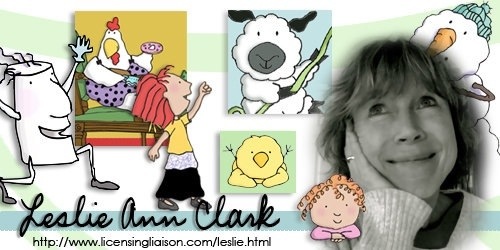
Filed under:
how to write,
Kicking Around Thoughts 


By:
Darcy Pattison,
on 6/24/2013
Blog:
Darcy Pattison's Revision Notes
(
Login to Add to MyJacketFlap)
JacketFlap tags:
novel,
scene,
darcy's books,
chapter,
how to write,
opening,
start,
begin,
opening line,
Add a tag
START YOUR NOVEL
Six Winning Steps Toward a Compelling Opening Line, Scene and Chapter

- 29 Plot Templates
- 2 Essential Writing Skills
- 100 Examples of Opening Lines
- 7 Weak Openings to Avoid
- 4 Strong Openings to Use
- 3 Assignments to Get Unstuck
- 7 Problems to Resolve
The Math adds up to one thing: a publishable manuscript.
Download a sample chapter on your Kindle.
My latest Fiction Notes book is now available!
Six Winning Steps Toward a Compelling Opening Line, Scene and Chapter
You want to write a novel, but you don’t know where to start. You have a great idea and—well, that’s all. This book explains the writing process of starting a novel in six winning steps.
CHAPTERS

- Starting the Journey
- Why Editors Focus on Page 1
- STEP ONE: Clarify Your Idea
- STEP TWO: Review Your Skills
- STEP THREE: Plan the Opening Chapter
- STEP FOUR: Plan the Opening Line
- STEP FIVE: Now, Write!
- STEP SIX: Revise
Writing teacher and author, Darcy Pattison, is the author of NOVEL METAMORPHOSIS: Uncommon Ways to Revise, How to Write a Children’s Picture Book, and The Book Trailer Manual. She brings extensive experience in teaching writing to this exciting new book and helps you get started with the creative writing process.
Read a Sample Chapter
Jane Friedman posted Chapter 2 on June 10, 2013 and you can read on her blog. Or go here to download a sample chapter on your Kindle.
Confidence to Begin Your Novel
- 29 Plot Templates
- 2 Essential Writing Skills
- 100 Examples of Opening Lines
- 7 Weak Openings to Avoid
- 4 Strong Openings to Use
- 3 Assignments to Get Unstuck
- 7 Problems to Resolve
The Math adds up to one thing: a publishable manuscript.
ABOUT THE AUTHOR
In 1999, Darcy Pattison started working with fiction authors on revising their novels. In order to come to a Novel Revision Retreat, participants need a complete draft of a novel and we spent an intensive weekend revising. The results? Many published novels, including Hattie Big Sky by Kirby Larson, winner of the Newbery Honor award.
Now, I am turning to beginning writers and bringing order to the writing process. If you start well, you have a better chance of writing a publishable manuscript—and needing fewer revisions. Start Your Novel is a natural extension of my teaching of fiction and will get you past the terror of the blank page.
Now available:
Please do me a favor!
As you know, reviews are extremely important! Please, post your honest opinion about the book on Amazon, GoodReads, B&N or other online sites. It isn’t necessary to enjoy and profit from the writing help you’ll find in the book. But I would appreciate it. Thanks! Darcy

2013 GradeReading.NET Summer Reading Lists

Keep your students reading all summer! The lists for 2nd, 3rd and 4th, include 10 recommended fiction titles and 10 recommended nonfiction titles. Printed double-sided, these one-page flyers are perfect to hand out to students, teachers, or parents. Great for PTA meetings, have on hand in the library, or to send home with students for the summer. FREE Pdf or infographic jpeg.
See the Summer Lists Now!
I’ve written before about writing a children’s picture book in this 30 Days to a Stronger Picture Book Series and the basics remain true. However, nonfiction picture books are currently getting a fresh look, mostly because of the education reforms known as Common Core. It requires elementary students to read 50% nonfiction, 50% fiction. That percentage of nonfiction rises to 70% in high school, which impacts longer nonfiction. But today, I’ll concentrate on the impact on picture books.
One of the more interesting developments is that educators, publishers and writers are looking at nonfiction in seven new ways.
- Narrative Nonfiction. The last 25 years has seen the rise of narrative nonfiction, or nonfiction that is told with fiction techniques. Sometimes called creative nonfiction, this genre emphasizes the story embedded in the search for information. Nonfiction writers use scenes, sensory details, and work for a traditional story arc with a problem that is resolved in a climax. This type story has been popular because it readily engages readers.
Examples of narrative nonfiction picture books:
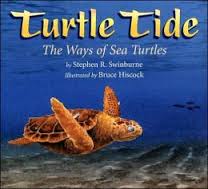
Turtle Tide: The Ways of Sea Turtles This book is one that has you hanging on the edge, waiting to see if any of the 100 sea turtle babies will survive. Fantastic build to a satisfying climax.- Wisdom, the Midway Albatross. My own picture book about the oldest known wild bird in the world uses a series of vignettes that climaxes with the Japanese tsunami overrunning Midway Island.
- Data (Facts First). Let’s face it: some kids just like facts. Browseable books like the Dorling Kindersley books (white background with stunning photos and related facts) are filled with data. It’s rather like flipping through an encyclopedia of a certain topic until you find the information that fascinates you, stopping to read, then flipping on. It’s the Guiness Book of World Records. Just the facts, Ma’am.
- Expository (Facts Plus). Taking it a step farther are nonfiction books that give facts but connect them in some way. It’s an explanation of some kind, but doesn’t have to have the story. Often in a picture book, the author reaches for a poetic voice, but the intent is still just an explanation. For an example, look at Frogs by Nic Bishop
- Books in the Disciplinary Thinking or Experts at Work are nonfiction books that ask how scientists and historians ask questions, evaluate research and develop theories. Sometimes these are biographies of a scientist or historian.
The Scientists in the Field Series from Houghton Mifflin is the perfect example of this type books. See the 2011 Siebert Winner Kakapo Rescue: Saving the World’s Strangest Parrot , written by Sy Montgomery, photographs by Nic Bishop.
- In Inquiry (Ask and Answer) Books, the author begins mimics the process of scientific discovery by asking a question and then allowing the readers to follow the process of finding the answers.
The Elephant Scientist is one of the Scientists in the Field Series from Houghton Mifflin, and a 2012 Siebert Honor book. Unlike some of the other book in the series, this one begins with a question: how do elephants hear? Is it possible that they hear sounds through their feet? This leading question is woven throughout the book and indeed, gives it even more of a narrative nonfiction feel. It’s easy to from this book that the subgenres will be hard to tease out. Is this book narrative nonfiction, Experts at Work, or Inquiry? It’s all three. Still, even thinking about it in this way means that we, as writers, have more choices, even when we choose to cross subgenres.
- Interpretation or Point of View nonfiction titles are not popular right now, but may become a stronger subgenre under the Common Core, as it asks students to do analytical thinking. Here, an author researches a subject in detail, then provides an interpretation of the information. Such books would model what students are required to produce in their own essays.
- Action Books invite kids do more than sit in a chair and read. Some include activities or experiments, and some are a call to action. They encourage kids to go out and do something that will make a difference in the world.
I Love Dirt! 52 Activities to Help you and your Kid Discover the Wonders of Nature asks kids and parents get outdoors and do something.
Writing the Nonfiction Picture Book
When you look at a topic—maybe Dads in nature—there are multiple slants you could take on the subject. And now, there are multiple ways to approach the research and writing.
Narrative nonfiction. For this category, there’s no book without a storyline. As you research, you are looking for the story embedded in the details.
Data/Facts. Here, you are looking for solid, reliable, verifiable facts. Of course, you are in any of these categories, but for this category, it is the facts that shine. You will have to organize the book in some way, but the natural divisions in the data will determine the book’s structure.
Expository. Explanations include facts that back up a certain premise or statement. As you research, you are looking for an overarching idea that the facts will explain. Sometimes you’ll start with what needs explanation but sometimes, it will emerge from the research and writing.
Experts at Work. This is a fun category because it means you must seek out experts and follow them around. Writer George Plimpton, who recently passed away, if famous for joining the Detroit Lions American football team in order to give his readers the most intimate sense of playing in this team. This type of immersive journalism may be an extreme example of Experts at Work, but it certainly fits the goals. The story here (and it is often a narrative) is about the expert not necessarily about what the expert is studying or doing.
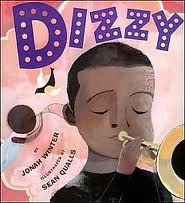 Interpretation or Point of View. In some ways, picture book biographies are an interpretation of a person’s life. Because the space is limited, these biographies can only cover a portion of a person’s life and by necessity become an interpretation. Dizzy, by Jonah Winters, is about Dizzy Gillespie, the famous Be-pop trumpeter. It leaves out many issues of his family and uses literary techniques to create a sense of what be-pop music is like. It’s a definite point of view. When you write this type story, look for what grabs you personally in a story or set of facts; how can you bring that to the forefront? Are these popular? Dizzy got starred reviews in five different review journals.
Interpretation or Point of View. In some ways, picture book biographies are an interpretation of a person’s life. Because the space is limited, these biographies can only cover a portion of a person’s life and by necessity become an interpretation. Dizzy, by Jonah Winters, is about Dizzy Gillespie, the famous Be-pop trumpeter. It leaves out many issues of his family and uses literary techniques to create a sense of what be-pop music is like. It’s a definite point of view. When you write this type story, look for what grabs you personally in a story or set of facts; how can you bring that to the forefront? Are these popular? Dizzy got starred reviews in five different review journals.
Action Books. While facts inform the action book category, it’s what the reader does with those facts that matters. In fact, the emotions evoked by the facts are as important as the facts themselves. It turns into a sort of persuasion essay, using facts to back up the need to do something. Look for facts that back up the actions you want readers to take. Build a strong, emotional case for that action.
Click to Tweet:

2013 GradeReading.NET Summer Reading Lists

Keep your students reading all summer! The lists for 2nd, 3rd and 4th, include 10 recommended fiction titles and 10 recommended nonfiction titles. Printed double-sided, these one-page flyers are perfect to hand out to students, teachers, or parents. Great for PTA meetings, have on hand in the library, or to send home with students for the summer. FREE Pdf or infographic jpeg.
See the Summer Lists Now!
It’s a question I often hear: Can you help me write a book?
Yes. Absolutely.
Here are ten books that will help you write a novel or a picture book. Some are my books, some are other author’s.

- Help with Basic Writing Skills–how to write a sentence.The Art of Styling Sentences
- Help Understanding Basic Story Structure: The Anatomy of Story: 22 Steps to Becoming a Master Storyteller
- Help Writing a Picture Book: How to Write a Children’s Picture Book
- Help Writing a Memoir: Old Friends From Far Away: The Practice of Writing Memoir
- Help Writing a Mystery: How to Write a Damn Good Mystery
- Help Writing a First ChapterStart Your Novel
- Help Writing a Young Adult: Writing Young Adult Fiction for Dummies
- Help Writing a Screenplay: Screenplay: The Foundations of Screenwriting
- Help Revising a Novel: Novel Metamorphosis: Uncommon Ways to Revise
- Help Writing a Blockbuster Novel: The Blockbuster Novel
Other Writing Resources on This Website


By: Alan Dapré,
on 5/26/2013
Blog:
Alan Dapré - Children's Author
(
Login to Add to MyJacketFlap)
JacketFlap tags:
Writing For Children: Tips by Alan Dapré,
alan dapre,
authors hints,
authors secrets,
writing hints,
writing kids books,
how to write for children,
getting published,
children's writing,
how to write,
mumsnet,
successful children's books,
useful writing tips,
writing tips,
writing for children,
Add a tag
I’ve had over 50 books traditionally published in a range of genres. Can’t remember the exact number but some have been plays for teenagers and younger children. Other books tied into characters on TV (such as Brum) and were joke, … Continue reading →

By:
Darcy Pattison,
on 4/5/2013
Blog:
Darcy Pattison's Revision Notes
(
Login to Add to MyJacketFlap)
JacketFlap tags:
fiction,
novel,
character,
voice,
first page,
first drafts,
setting,
how to write,
opening page,
Add a tag

A cat says ________.
A dog says________.
A skunk says______. (We don't know!)
Watch this video to hear a skunk, a ground hog, a bison and more.
Withholding information
When a reader first opens your novel or story and reads the first line, the first paragraph, have you welcomed the reader and tried to put them at ease? It is imperative to invite the reader into a story in a way that puts them at ease. This means clarity must rule. The reader must never question where the story is taking place, or what—exactly—is happening in this scene. You do not have to spill all the backstory at this point—that doesn’t work. But the reader should know when, where and who and a hint of why.
Setting. The setting should be clear and specific, with sensory details appropriately sprinkled throughout the opening scene. This includes information on the geographic location, time frame (e.g. 6th century BC or 2017A.D), and something about the emotional territory.
Character. In the opening pages, the reader should meet a character that intrigues. Please, don’t name five characters on page one and expect the reader to stay oriented. Instead, give each important character a grand entrance. The inner life of the main character should start to come alive, as well. What does s/he fear, love, long for?
Cautions: The worse drafts hide information, wrongly believing that just giving a hint here or there is the best strategy. Instead, the reader becomes confused and closes the book, never to open it again. The great sff writer Orson Scott Card wisely said, “The only thing to withhold is what happens next.” Within the context of a scene, this is exactly right. The reader should understand exactly what is going on—and be so enthralled that s/he turns the page to find out “what happens next.”
Don’t use this as an excuse to include backstory, though! Backstory comes ONLY at the point at which it will create an emotional crisis in a reader. Instead, when the reader is deep within a scene, they should only care about what happens next.
Voice is too formal
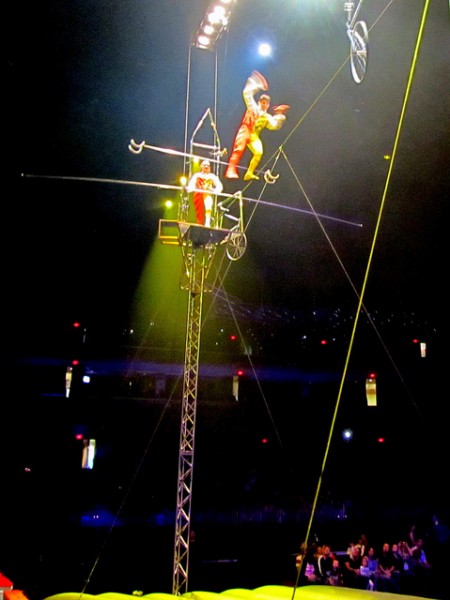 In the search for a great voice, some writers fall back on their English class and write too formally. Great fiction is informal writing. This means you can use slang, jargon, curse words (when appropriate), incomplete sentences, sentence fragments. You can, and should, interrupt someone when they are speaking. Characters can be rude. A great novel is not a tea party! Stop being so polite, so formal.
In the search for a great voice, some writers fall back on their English class and write too formally. Great fiction is informal writing. This means you can use slang, jargon, curse words (when appropriate), incomplete sentences, sentence fragments. You can, and should, interrupt someone when they are speaking. Characters can be rude. A great novel is not a tea party! Stop being so polite, so formal.
Try making up rules for yourself–play with the formality of your novel; keep what works and discard the rest. Don’t like my rules? Make up your own. But play!
- For every ten sentences, you must use a sentence fragment.
- You must use one slang/jargon word per page.
- You will write one section of dialogue (about 10 exchanges) and every bit of dialogue is incomplete sentences.
- In every chapter, someone must be rude.
Boring
Yawn. What happened in this chapter?
Nothing.
Then, why is the reader turning pages?
They aren’t!
A good exercise is to go through each chapter and write one sentence that summarizes what happens. Something important must develop or change in some way in every single chapter. Novelists do not have the luxury to stop and give us back story or tell every single detail of the setting. You must pick and choose from among the myriad of details, bits of dialogue, actions, thoughts and arrange them in an exciting, fascinating, intriguing order.
Stoic Character
For every action, your main character should have an emotional reaction. Why else is the reader following this character around? OK. Not every single action. But it’s a good exercise to try: underline the actions, and circle the main character’s emotional reaction to what just happened. How do they correlate? Do we have 100 actions and only one emotional reaction? Where ever you are on the continuum from no emotional reaction to 100% emotional reactions, evaluate it in terms of your character, your novel. Is the reader getting enough of your MC’s inner life to keep turning the pages? From my experience as a first reader, most novelists err on the side of not enough emotion. If this is hard for you, push yourself toward too much emotion and you may wind up about right.
Balance
Writing a novel is a continual decision-making process. For each detail you might include, there are dozens of great ways to put that into words. We go from words to sentences to paragraphs—and each word selection carries connotations and denotations. It’s complex! The variety of ways to tell a story are amazing. What scenes do you include/exclude, and why? What character is the main character? The point of view character?
Throughout the process of writing a novel, it’s a balancing act all the way. We walk a tightrope upon which we build a story. One misstep and the reader falls off.
This is one of the main reasons why first pages go wrong. 90% of a story may be working, until a sentence here, a word there, a questionable emotion in the midst of the scene—and the reader puts the book down. Fine tuning the novel is crucial. Here is where first readers can really help, by marking the places that are “off.” Even if they can’t articulate WHY this section is OFF, they know it when they read it. You don’t want an English teacher marking up the story with red marks. You want a sensitive reader saying, nope, this doesn’t fit. Don’t know why, just know it doesn’t fit.
It’s a matter of balance: every word must belong. Nothing must be out of place. The reader must keep turning pages with no interruptions in the flow.


A cat says ________.
A dog says________.
A skunk says______. (We don't know!)
Watch this video to hear a skunk, a ground hog, a bison and more.
I’ve been reading manuscripts lately and one thing keeps jumping out at me: dialogue that is too perfect. It’s grammatically correct, perfectly punctuated. And totally unreal.
Characters don’t talk that way. Kid-characters, especially, in the midst of an exciting bowling tournament or soccer or other sports games do NOT talk in complete sentences.
Use Sentence Fragments for Realistic Dialogue
 You must get over the fear of sentence fragments in order to write believable dialogue. Really. Right now. Commit to at least one sentence fragment on every page of your manuscript, just for practice.
You must get over the fear of sentence fragments in order to write believable dialogue. Really. Right now. Commit to at least one sentence fragment on every page of your manuscript, just for practice.
Here’s an example from Clementine, Friend of the Week by Sara Pennypacker:
(p.6)
“What does that stand for, M.V.P.?” I asked.
Margaret scratched her head like she was fake-remembering. “Oh, right! Moron-Villain-Pest,” she said. “He wins it every year. No competition.”
That is three sentence fragments: Oh, right! Moron-Villain-Pest. No competition.
What if Pennypacker had filled out those sentences?
“Oh, you are right! M.V.P. means Moron-Villain-Pest. He wins it every year. There is no competition.”
That is clumsy to read, more boring, and destroys the voice of the novel. Sentence fragments work better here to keep the rhythm, keep the pace interesting and maintain the ironically-innocent voice of Clementine.
Sentence fragments also allow the writer to put emphasis where needed to direct the reader’s attention. Here, the emphasis is on the definition of M.V.P and how well the M.V.P fulfills his role. No competition.
Are you struggling with believable dialogue? Look at writers like Elmore Leonard, David Mamet and Woody Allen.
What authors do you admire for their dialogue?


By:
Darcy Pattison,
on 3/27/2013
Blog:
Darcy Pattison's Revision Notes
(
Login to Add to MyJacketFlap)
JacketFlap tags:
info dump,
fiction,
novel,
nonfiction,
characters,
plot,
setting,
how to write,
novel revision,
Add a tag
Follow our Pinterest Boards
When writing a novel, one common admonishment is to keep in mind the goal of entertaining the reader. Fiction’s purpose is to entertain; non-fiction’s purpose is to inform. But the lines between the two can often blur, as when non-fiction uses narrative techniques.
This week, I’ve been reading Cory Doctorow’s book, For the Win and he uses info dumps like crazy, putting in lots of technical discussions, potentially boring information. He does it–and it works? What is he doing right?
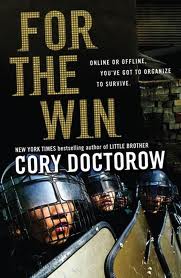
Story comes first. For the Win is first and foremost a wide-ranging global story of online gaming and how the workers across the world join together to fight for better working conditions. There’s a strong plot, strong goal and an interesting series of developments.
Interesting characters. Doctorow also pulls together a fascinating cast of characters, drawn from the four corners of the globe. There’s the uneducated, but smart Indian girl from the slums, a disillusioned teen from California, Worker activist from Singapore, determined striker from China, and equally fascinating radio personality from the Pearl Delta of China. They are all fleshed out with real-world needs, wants, goals, and their individual circumstances come alive.
Setting. For each character, their setting is particularized with specific sensory details. You get spicy chai and well-water in an Indian slum juxtaposed with the luxury of a wealthy California home.
In short, Doctorow tells a stirring, interesting tale.
But he goes a step farther. As long as he has your attention, he wants you to know something about the online gaming world. If you look at the top ten world economies, many of them are virtual worlds and economies of an online game. Sometimes, he stops and gives an info dump on economics, gaming rules, worker unions and so on. And sometimes, he has one character ask another to explain something.
For example, the Indian girl who is such a great gamer they call her General is uncertain about economics. She asks the college-graduate economist to explain something, then because the General dosen’t understand the complicated economics, the Economist explains further, in simpler terms.
It works. Really, it shouldn’t work, it’s an info dump and at that point of the novel, Doctorow is just trying to teach me–the reader–something about economics. (I am denser than the General sometimes!) And I don’t mind a bit. I keep reading. Because in the context of the exciting story, I don’t mind a bit of explanation, in fact, it adds to the enjoyment of the story, because I understand motivations and the worker’s dilemmas better. Doctorow makes me root for the worker’s revolution because I understand it better.
If I was just reading about economics, my eyes would glaze over. Reading this novel, though, I am fascinated and I try harder to understand. It matters because he’s made me like the General and hope that her life gets better.
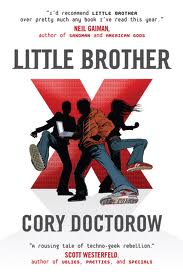 Likewise, if you need another example of how an info dump works well in a novel, read Doctorow’s book, Little Brother.
Likewise, if you need another example of how an info dump works well in a novel, read Doctorow’s book, Little Brother.
Go ahead: break the rules and give us an info dump in your novel. But please–tell a story first.

Follow our Pinterest Boards
A narrative arc is a necessary part of fiction and is often a key component of nonfiction, especially narrative nonfiction. The arc indicates that there is some sort of progression.
Emotional Progression. The most common sort of progression is for the emotions to build to a climax. If two characters are arguing, the intensity, complexity and depth of the argument grows over the course of the story. It is mad, madder, maddest. If it is a verbal argument, it spills over into physical actions.
Character Progression. Similar to the first is the progression of a character through stages of change. This could be a change from doubt to faith, or loyalty to betrayal. The direction of the change can be in any direction, from moral to immoral or vice versa. The main thing is that there isn’t a steady state for the character, but there is change.
Plot Progression. This is partly the time-line of the story, but plot progression also implies that the events included int he story are intertwined in some way that leads to a bigger event or an event that means more than the previous events.
For narrative nonfiction, there can be other sorts of progressions, which will mimic or replace the narrative arc. Fiction writers will want to pay attention to these, too, because within a story, there may be places where some information would benefit from strategic organization. For example, my first picture book, THE RIVER DRAGON, had a series of descriptions of a dragon’s voice. Here’s the progression I used in which the metal mentioned became more base and the sounds became louder: a voice like the clink of copper coins, voice like the gong of a brass cymbal, and voice like a hammer on an iron anvil.
Here are some other options for progressions.
Time-line. The life and times of a scientist, for example, may be enough of an arc for some articles or simple books.

Physical progressions. For some nonfiction, it may be enough to organize the information around some physical characteristic. Perhaps discuss birds in order of size starting with the tiniest hummingbird and progressing through condors and other large birds. Or, you may discuss birds beaks and organize on that basis.
Logical progression. Often narrative nonfiction attempts to logically explain some issue. Here, the organization revolves around the logic of arguments, that of laying out the basic thesis and then providing supporting information.
Spatial progressions. Little used, but often effective, is a spatial progression. Here, you may describe the countryside to the north, then east, south and west. The progression may go from a person’s hat to their shoes.
When we write and readers read, we are looking for meaning, for coherence and cohesion. We want the writing to make sense of events, rather than a random collection of facts. Even browsable nonfiction imposes some sort of organization on facts, by grouping elephants on one page and mice on another. Look for narrative arcs and progressions to help you create the strongest organization possible.

Follow our Pinterest Boards
A friend and I are working on an idea for a picture book based on a true life event. The challenges in doing this are multiple.
First, it has to has to interest the audience of small children and adults, because picture books really have two audiences, the kids and the adults who read to the kids. It means that there has to be a surface story and a deeper story.
Second, while I must remain true to the events, there still needs to be a story. I know there is a lot of discussion about some kids wanting “straight up science”, you don’t have to use a narrative arc; nevertheless, narrative nonfiction is my preference. The biggest challenge, though, is to find a story in the facts, one that resonates with the audience(s).
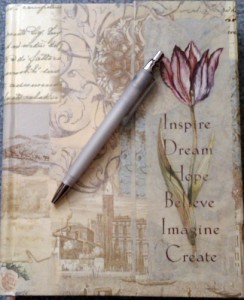 Third, one reason to write a nonfiction picture book is to educate readers about topics that are important. In this case, the topic is endangered species and how loss of habitat is putting stress on certain populations of animals. It’s also about some successful intervention strategies that are current and could be a hot topic. Oh, wow, that sounds SO boring, even to me. And therein lies the challenge: how do you make the information accessible to a picture book audience, i.e. put it in words they can understand? And how do you make them care about the issues at stake?
Third, one reason to write a nonfiction picture book is to educate readers about topics that are important. In this case, the topic is endangered species and how loss of habitat is putting stress on certain populations of animals. It’s also about some successful intervention strategies that are current and could be a hot topic. Oh, wow, that sounds SO boring, even to me. And therein lies the challenge: how do you make the information accessible to a picture book audience, i.e. put it in words they can understand? And how do you make them care about the issues at stake?
Fourth, all the while, you must tell a story and it must be under 1000 words. It must have a beginning, middle and end, setting up a conflict and resolving it someway.
I kept asking my friend: “Where is the story?”
She had no answer. I had to find it myself.
To do this, I looked at primary source materials: I looked up the exact place the event occurred on Google Earth and looked at photos uploaded from nearby locations; I read original reports on the event from scientists involved; I researched the animal in question and its habitats. I immersed myself in everything I could for 48 hours. I slept. Then, I wrote.
I didn’t outline, because the story line was totally clear. What was at stake was the writing itself. How you write it is everything.
And the process worked. This is a time when I could not have predicted that the story would turn out as it did. Sometimes, you simply have to write a first draft and see where it goes, let your subconscious do its work. But at the same time, my analytic side was watching: where was there a spark of emotion? where did something get written that might create a pattern?
In the end, I am thrilled with the draft. I didn’t think the story would work as a picture book. But I trusted the process: I wrote.
What do you need to write today? Trust the process.

Follow our Pinterest Boards
Yesterday, I went to a local elementary school to tutor, something I’ve recently started. My second grader, CL, brought a nonfiction, information worksheet to go over. He read through the information on what makes popcorn pop and did pretty well in the reading. But his understanding was weak.
The paper said that popcorn kernels pop because the water in the kernel gets heated up into steam, which cracks open the hard cover and the popcorn pops out.
OK. I asked CL, “What is a kernel?
He didn’t know. In fact, he consistently had trouble pronouncing the word. And yet one of the exercises was to draw popcorn before and after popped.
Even more crucial to understanding the text, I asked CL, “What is steam?”
He didn’t know.
The writer of this informational piece made assumptions about his audience, that they would understand certain vocabulary words: kernel and steam. Further, these words were crucial to understanding the piece. In my opinion, the writer failed in communicating. (Yes, in the context of a school assignment, maybe CL just needed to learn a couple words. But these weren’t presented as vocabulary words; instead it was an informational piece that he needed to comprehend, but crucial information was missing from the text.)
How often do we fail to engage our audience because of our vocabulary, our sentence structures, the organization of our stories. Do you consider audience at every turn?
For fun, go to Up-Goer Five and try to write something only using the Ten Hundred most common English words. How does this compare to your usual writing? How should it compare?

Of course, even when writing picture books you don’t have to worry about vocabulary level because these books are usually read by an adult to a kid. However, you do need to make sure the adult will understand the book. Also, many unfamiliar words can be understood in context.
Vocabulary Level. Make sure your vocabulary levels will be understood by the reader. For unfamiliar words, create a strong context, or define it in the text.
Dialect or Diction. 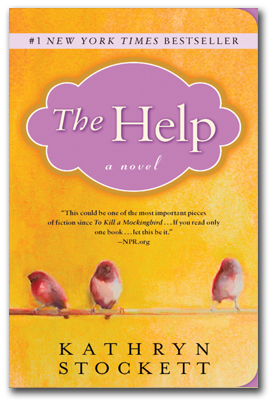 THE HELP was written in dialect and it almost turned me off from reading it. It wasn’t the topic or the events, just how it was told. It’s also part of the charm of the story.
THE HELP was written in dialect and it almost turned me off from reading it. It wasn’t the topic or the events, just how it was told. It’s also part of the charm of the story.
Insult or Bless. Remember, too, that your words have the power to tear down or build up. Yes, in fiction, there are awful conflicts that must be expressed honestly. Yes, characters tear each other down. But overall, does your story end in a note of hope? Does good triumph over evil? I know there are dark stories without hope, without success. But they aren’t the type of stories I want to write. My stories end with hope.
Too Intellectual? When I write fiction, I use the words that are appropriate for my story, words that convey exactly what I mean. And yet, I also know that I tend to be a bit too much in love with my words. Sometimes, I will replace words–for my audience’s sake.
What do you do for your audience’s sake? What are you assuming they will know that will make your communication fail?

Guest post By Marcie Flinchum Atkins
What is a mentor text?
As a writer, do you read as many books as you can get your hands on? When you are stuck on how to write a particular scene, or you can’t get your beginning quite right, do you go to some of your favorite books to see how that writer handled it? If you read like a writer, then you are using mentor texts.
Mentor texts are stellar pieces of writing that are used to “mentor” another writer. It’s teacher-speak for a book that a teacher uses as an exemplary example of how to write well.
Market Your Book as a Mentor Text
You are a professional writer. Just like athletes who want to become better observe and learn from the pros, young writers should look to your writing as a model.
As a teacher, I don’t teach kids how to write from a textbook. I use real examples from books they love. Of course, teachers love to find books that can be used to entice reluctant readers to read. We search for books that tie into our Social Studies and Science curriculums. But we also want to find books that can help us show kids how to write.
I’m not suggesting we are looking for how-to books. Teachers are using their favorite books to teach kids how to read like writers. As a writer, you can market your book to teachers to use as a mentor text. We aren’t just looking for an interesting story (although that is VERY important), we are also looking for ways to show kids how you put your story together. How did you use description to make the reader “see” the setting? How did you use shorter sentences to speed up the pace? We want to show students how you stitched your story together.
Mentor Text Lessons
There are hundreds of writing lessons that you could do with a text and each teacher will gear specific skills to his/her state standards and the level of the students. Take a look at the standards for the grade level of your book (Common Core or individual state standards) to see if you can capitalize on your writing strengths and pair it up with what teachers need to teach in the classroom.
Some common ideas for lessons include:
- Word choice—including vivid verbs, specific vocabulary, sensory words
- Word play—onomatopeoia, puns, figurative language, made up words
- Description—including descriptions of setting and characters
- Beginnings and Endings
- Organization of text—this is useful in non-fiction
- Sentence Variety
I teach fourth grade, and in the last month, I have used THE NIGHT FAIRY by Laura Amy Schlitz, SAVVY by Ingrid Law, and OVER AND UNDER THE SNOW by Kate Messner to help students use vivid verbs in their own writing. I used COME ON, RAIN! by Karen Hesse and HEAT WAVE by Eileen Spinelli to show them how sensory words can make their writing better. I find myself going back to some books over and over again because they are full of so many writing gems.
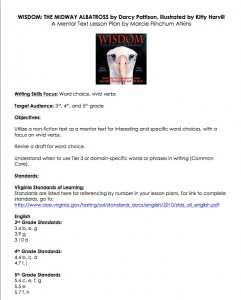 For a sample lesson plan, see how I suggested 3-5th grade teachers use Darcy Pattison’s WISDOM, THE MIDWAY ALBATROSS: Surviving the Japanese Tsunami and other Disasters for Over 60 Years.
For a sample lesson plan, see how I suggested 3-5th grade teachers use Darcy Pattison’s WISDOM, THE MIDWAY ALBATROSS: Surviving the Japanese Tsunami and other Disasters for Over 60 Years.
Do you do school visits? Speak at teacher conferences? Have a teacher resource area on your website? These are all good places to market your book to writing teachers and give examples of how your book can be used in the writing curriculum.
Resources for Mentor Texts
I have a link on my website that lists books and online resources I like for mentor texts. They are resources for teachers, but they will be helpful for writers to see how teachers use books as mentor texts.
You have spent years perfecting your craft of writing. Help teachers not only inspire readers to enjoy your story, but also provide ways they can inspire budding writers in their classroom as well. Market your book as a mentor text for young writers.
–

Marcie Atkins
teaches fourth graders to write using mentor texts and trains teachers on how to use mentor texts in their classrooms. In the wee hours of the morning, she also writes picture books and novels. For more resources on mentor texts, check out her website: http://www.marcieatkins.com. Click on the “For Teachers” tab.

As 2013 starts, it is traditional to write down writing goals and I am doing that. But I am also pondering the fact that I am in charge of my own writing, and that is a double-edged sword.
As 2012 drew to a close, the Congress was debating fiscal matters, trying to prevent the country from falling off a so-called fiscal cliff. As much as I might care one way or another, it was all out of my hands. I voted for a Congressman and for a President. But beyond that, the decisions were not a part of my daily life.
My writing, however, rests squarely on my own shoulders. Will I write today? (Duh!) What will I write–today? That isn’t President Obama’s business, it’s mine.
 In the amazingly relevant book, ART AND FEAR, Bayles and Orland say that we daily face a specific fear: “. . .–the fear that your fate is in your own hands, but that your hands are weak.” (p. 3)
In the amazingly relevant book, ART AND FEAR, Bayles and Orland say that we daily face a specific fear: “. . .–the fear that your fate is in your own hands, but that your hands are weak.” (p. 3)
For me, the overriding drive isn’t the fear of failure, it is the fear of never-having-tried. I don’t want to hit 100 years old and look back and regret that I never tried. Tried what? The stories that scare me, that I think I am too weak, too bad a writer to pull off, too inadequate to tell such a moving story.
I don’t know what I will write this year, there are many factors to weigh. But one of those is the need to accept the challenge of telling stories that are important to me–even when I am terrified of trying. That’s my only goal for 2013: to write with more courage and determination than ever before. Because I am in charge of my own writing.
What story have you been too scared of writing? What story did you think you could NEVER write? Let’s do it together this year!

When you write, do you put yourself on the page? Of course, you do. You can’t do otherwise. But the real issue is, how much of yourself do you allow to show through? Do you censor yourself? Do you deliberately reword because something you may say will reveal too much of yourself?
Admit it. It’s hard to talk about real issues, about how you really feel, with friends. And then, you expect to put it on the page? For example, I grew up with an alcoholic step-father and, believe me, those years are hard to talk about. Even the mention here is hard.
Our fears revolve around issues of shame. You would be embarrassed if someone knew this one thing about you. You wouldn’t be able to show your face, if you revealed such and so. (Once, I found one of his hidden bottles and opened it and dumped the whole thing out and then put the empty bottle back where I found it. He never said anything–because of his shame and embarrassment, I presume.)
Vulnerability–showing our real face to others–is essential if your fiction will have an authentic voice, a deep impact on readers. Sure, there’s fluff writing, pure entertainment. But what sells are stories about real issues, told in a way that impacts others deeply.
To resolve those issues of shame, to allow yourself to be vulnerable, I recommend you start by watching this video by Brene Brown, which has been viewed over 7 million times. The description sounds like a definition of the task of a novelist: “Brené Brown studies human connection — our ability to empathize, belong, love. In a poignant, funny talk, she shares a deep insight from her research, one that sent her on a personal quest to know herself as well as to understand humanity.”
If you can’t see this video, click here. TED also includes a transcript in multiple languages.
I am preaching to myself, most of all. I know that in 2013, I want to write the most honest, most vulnerable stories I’ve ever attempted. Someone once asked, “What are you scared to write?” Then, recommended that you attempt that very thing. I am most scared of stories which will lay my soul bare, leave me vulnerable. That’s what I need to attempt next.

I recently had the privilege of listening to Sara Pennypacker, author of the Clementine series of early-chapter books. Her books are widely recognized as a forte in capturing the reader and drawing them in. The opening scene of Book 1 has Clementine, a third grade dynamo, sitting in the principal’s office and a frequent comment is that the scene is hilarious (I’ve written about how well this scene orients the reader, too.)
But Pennypacker says she didn’t write it humorous. Rather, the reader wrote it funny. What does she mean?
Consider this line:
“Someone should tell you not to answer the phone in the principal’s office, if that’s a rule.”
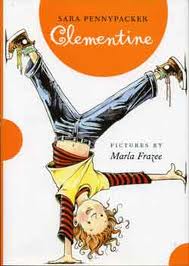 It’s funny. You know from this line that Clementine has answered the principal’s phone line and it resulted in disaster. Even without details or without the usual “Tell-Don’t-Show,” it’s funny. But the humor is created in the reader’s mind, by your imagination.
It’s funny. You know from this line that Clementine has answered the principal’s phone line and it resulted in disaster. Even without details or without the usual “Tell-Don’t-Show,” it’s funny. But the humor is created in the reader’s mind, by your imagination.
The technique of leaving out the most dramatic part in favor of letting the reader create meaning is useful, especially in opening lines. The danger is when it’s used too often or if it is used as a lazy crutch or excuse for not Show-Don’t-Telling. In other words, most of the time, the important details should be shown, not told. But sometimes, leaving out details and letting the reader fill them in is OK. It’s effective in Clementine’s opening page because it fits Clementine’s voice as a naive character and because Pennypacker already gave the reader specific details: Hamburger Surprise at lunch, Margaret’s mother coming to get her and so on.
Also, while what is left out is not specific, it is absolutely clear. The reader is not confused by having something left out. Clarity rules.
Notice, though, that this introduction is swiftly followed by a conventional scene with a stricter adherence to the Show-Don’t-Tell maxim. Used too often, leaving out the most dramatic part would just confuse the reader.
Another place to leave out the most dramatic information is when you set up a new scene. The tendency is to provide a summary–that holdover from having to write a thesis statement, probably.
Consider:
Emily knocked on Bruce’s door. She just had to make it through his Christmas party.
Here, we’re told in a summary statement what the upcoming scene will entail, “making it through his Christmas party.” Instead, you could use a scene cut and let the reader experience the party for themselves.
Emily knocked on the door.
* * *
Emily wanted to plug her ears against the jazzed up Christmas carols that blasted above the crowd noise. She edged around the edge of the room toward the punch table, avoiding an elbow here and barely keeping a cowboy boot from stomping on her foot, hoping to find someone familiar.
Here, we are experiencing the party with Emily. Leaving out the summary statement about making it through the party strengthens the reader’s curiosity about what happens next. That’s the only thing we leave in question: what happens next? Don’t undercut this natural curiosity by summarizing the action before you present it. Time enough later for Emily to gripe to Joe about the lousy party.
Pennypacker had a hard task, to introduce a specific scene, to set up a voice, a character, a situation, and eventually a series of books about this endearing third grader. She succeeded by letting the reader participate in creating humor.

The kindergarten class in Room 9B was an odd class.
The kindergarten class in 9B was odd.
Which sentence is more effective?
What is the most important work in the sentences?
Odd. It’s an important word because it distinguishes this class from all others. The next sentence of my picture book 19 Girls and Me tell the reader that this class has “19 girls and one lone boy.”
My point here is that sentences can be structured to emphasize—or deemphasize—anything you choose. Where do you want the reader to pay attention?
When you read a sentence you remember or pay attention to the end of the sentence the most. The second best position for memorable information is the beginning of the sentence. When you bury a word or phrase in the middle of a sentence, it is less memorable.
In my picture book, WISDOM, THE MIDWAY ALBATROSS, I wanted to emphasize that when an albatross first migrated, it doesn’t come back to land for years. Look at the difference in these two sentences. The first emphasizes the time a bird flies. The second emphasizes that the bird soars.
She soared for five or six or seven or eight years.
For five or six or seven or eight years, she soared.
It’s a subtle difference, but an important one for me, because I find it totally amazing that for years, she does nothing but fly. I wanted the reader to feel that same amazement. I also used soar, instead of fly because it more accurately captures the bird’s movement of flying on the thermals. There’s no wing flapping here because she has a special elbow joint that locks into position, keeping her wings outstretched. That’s soaring. Not flying.

You can also, though, use the technique to hide information in plain sight. Writing a mystery, you might choose to put a specific clue into the middle of a sentence. What if a bag of donuts was an important clue? Which sentence would you choose to use and why? Do you want the reader to remember the donuts or not?
Picking up the bag of donuts, she wheeled her bicycle onto Broadway and headed toward the river.
She wheeled her bicycle, donuts balanced on the handlebars, onto Broadway and headed toward the river.
Making for the river, she balanced donuts on the handlebars and wheeled her bicycle onto Broadway.
She wheeled her bicycle onto Broadway and headed to the river, donuts safely stashed in her bicycle’s basket.
She wheeled her bicycle onto Broadway and headed to the river, her bicycle’s basket full of hot, fresh donuts.
Interesting, is the use of the passive construction for the purpose of emphasis. Usually passive constructions are frowned upon because they make the action seem once-removed. But a passive construction is useful to push words to the end of the sentence for emphasis.
The street woman pushed a noisy shopping cart.
The squeaky shopping cart was pushed by a strange street woman.
To emphasize the shopping cart, use the first sentence. To emphasize the street woman, use the second—a great use of passive construction.

Finding the Sweet
Write what you want to write,
say the editors.
Write what you love,
say the editors.
I write.
I love this!
Well, say the editors, it lacks a plot.
OK.
I write what I love and
make sure it has a plot.
A good ‘un.
(Hey, I’ve studied Hunger Games,
and the Edgar winning mysteries;
I know a good plot
when I read it.)
I love this!
Well, say the editors, the voice doesn’t grab me.
OK. I write what I love and
make sure it has a plot and
make sure the voice is unique, compelling.
A good ‘un.
(Hey, I’ve studied the Newberys,
the Caldecotts, the Alexes,
the Sieberts,
the Edgars, and so on.
I know voice when I hear it;
and I know how to create it.)
I love this!
Well, say the editors, the plot
is great;
the voice
is great;
but I don’t really connect with the characters enough.
OK. I write what I love and
make sure it has a plot and
make sure the voice is unique and
make sure that the characters are connectable.
A really good ‘un.
(Hey, by now, I’ve read all the New York Time’s
Bestsellers, the National Book Award winners,
plus any other @#$#$@ novel
that anyone ever recommends.
I know a good book when I read it–
or write it.)
Hey, I really love this!
Well, says the editor, you got everything right:
plot, characters, voice–
but it’s too quiet.
Where, oh where is that sweet spot?
And how can I write something else
that I love,
knowing that
no one else will love it?
Where is that sweet editor?

A Sweet Spot.

Every scene must end in disaster. Really? EVERY scene?
OK. Most scenes.
I only say that every scene must end in disaster because if I give writers wriggle room, they run with it. So, yes, let’s work on the premise that every scene must end in disaster. What disaster? How do you choose?
Progressions. In general, your disasters need to be some sort of progression from bad to worse to absolute worst. Look at your story to find the natural progressions and then try to exaggerate a bit. For example, if a ballerina wants to try out for a dance part, what would be the absolute worst? Showing up drunk, out of shape and sloppily dressed–looking and acting like a bum.
Is that too extreme? Probably. So, back off the Worst scenario to find something reasonable: an injured Achilles tendon; just recovering from emergency appendectomy; a secret habit of drinking; grieving from a family death or tragedy. I like to plan the worst possible then back off from that for about mid-story and back off from that for the story opening. Working backward from Worst seems to ensure for me that I actually GO to the Worst and don’t try to avoid it.
Multiple Disasters. Also think about the subplots and how each of their narrative arcs can add to the overall disasters. By the time you slot into your story plan the Bad/Worse/Worst for the main plot and for a couple subplots, then you’re on your way to every scene ending in disaster. Then, you’ll just have to find ways to create disasters for the extra needed scenes of your story.
Ambiguous Disasters
One tool in your toolbox should be the ambiguous disaster. This is when the character appears to win, but in the end, s/he doesn’t. In this scene from Good Will Hunting, Will, Chuckie and their gang go into a Harvard bar (warning: PG-13 for language). Chuckie tries to pick up a couple girls and a Harvard guy steps in to humiliate him. Will steps in, though, to humiliate the Harvard guy. On the surface, Will’s intelligence wins out; but in the end, the Harvard guy wins simply because society recognizes a Harvard degree over native intelligence. It’s a great example of an ambiguous disaster: Will wins on one level but utterly fails on another. It demonstrates (Show-Don’t-Tell) exactly what Will faces in the rest of the story: society’s expectations about intelligence and the role of a college education in getting jobs.
If you can’t see this video, click here.
So, while you must end each scene in a disaster, you can let your character have some level of success–just don’t let it go too far, too early. Remember the mantra: Bad, Worse, Worst.

To understand novel revision, there are three basic concepts you must grasp.
First, is the idea that when you finish a novel, there are now two novels. There’s the one on paper and the one in your head–and they are not the same. One of the major tasks of revising your novel is to make sure everything in your head is on the paper. How many times do readers say to you things like this: I don’t understand. I can’t visualize how that happened. I am confused.
And you are totally surprised, because of course, it’s right there in the story. No. You didn’t put it on the page.
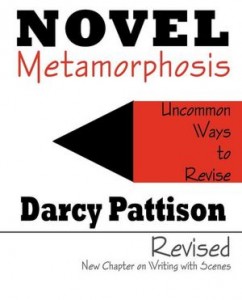
Second, you are also trying to match up your story to your concept of an ideal story. An ideal story–according to you–might be one with lots of action, stirring emotions and a great love story that resolves at the end. Or it might be one of slowly peeling back the layers of action to reveal a character. Whatever your ideal story is–you didn’t hit it on the first draft and the second draft is your chance to try it again.
Third, and related to the first two, the function of a revision is different from the first draft. In the first draft, you are figuring out what story you want to tell. In the second and subsequent drafts, you are figuring out what is the most dramatic way to tell that story. What can you change, how can you structure it differently, so that your reader stays engaged the whole way through?
Revision is the only way to achieve a publishable novel and it’s not scary. It’s just a different phase of writing the story from the first draft–making sure what’s in your head is on the page, and one of matching up a story to an ideal story, and one of considering your reader and making sure you keep that reader the whole way through.

I recently did a revision of a short novel manuscript, based on editorial Notes. The Notes were not specific, rather quite general. You see stories of 15-page editorial letters, but this was the total opposite. Basically, the story seemed out of focus and the interest lagged at a couple points.
Refocus the Story

Wow. What a vague comment. But immediately I knew what the problem was.
My story has a main plot — Parties– and two subplots, Bugs and Music. In the original draft. Chapter one focused on Parties/Bugs, but chapter two went to Music/Bugs.
What is the main plot? Parties.
But when chapter two went to Music/Bugs, it threw the main plot out of focus. Instead, I moved the Music/Bugs to chapter three and pulled a later Parties chapter up to the chapter two position. Of course, that meant smoothing out transitions and timelines, something easy to do; it was also easy to get wrong, because it was tiny things that indicated the timelines. “Later that day. . .” “. . .from yesterday.” I am very bad at finding all of these small edits and am relying on some critiques to make sure I didn’t miss something.
Besides the position of the subplots, I also realized that one subplot had too many scenes. In the short novel that I’m working on, I didn’t have much room for each subplot, so when Bugs got four pretty major scenes, it threw off the focus again. After evaluating the four scenes, I realized that one was slightly repetitious and I could cut it without affecting the overall story. That strengthened the Bug climax because the two lead-up scenes were enough and it left this remaining scene more fresh and fun.
Finally the Notes suggested that the climax of the main Parties plot was too short. Duh. It was only half a chapter. In the revision, it begins in the next-to-last chapter, and continues through most of the last chapter. Making the climax of the main plot longer, gives it more weight.
Overall, here’s what I did:
- Cut a Bugs scene.
- Rearranged the order of Parties plot, Bugs subplot, and Music subplot.
- Strengthened the Parties main plot by enlarging the final Party scene.
- Created more tension throughout by tweaking the emotional impacts of events.
All of that because the Notes said the story was out of focus and the final Party scene needed to be longer. It’s what we do: we revise.

View Next 25 Posts
 Deadlines are also useful in fiction. This is the idea of a time bomb that will explode unless the characters accomplish something. There may be a real time bomb if you’re writing a thriller. Or, it may be a deadline such as an event; the character must accomplish such and so before the Halloween party, or the end of school, or before someone finds out something.
Deadlines are also useful in fiction. This is the idea of a time bomb that will explode unless the characters accomplish something. There may be a real time bomb if you’re writing a thriller. Or, it may be a deadline such as an event; the character must accomplish such and so before the Halloween party, or the end of school, or before someone finds out something.









 Keep your students reading all summer! The lists for 2nd, 3rd and 4th, include 10 recommended fiction titles and 10 recommended nonfiction titles. Printed double-sided, these one-page flyers are perfect to hand out to students, teachers, or parents. Great for PTA meetings, have on hand in the library, or to send home with students for the summer. FREE Pdf or infographic jpeg.
Keep your students reading all summer! The lists for 2nd, 3rd and 4th, include 10 recommended fiction titles and 10 recommended nonfiction titles. Printed double-sided, these one-page flyers are perfect to hand out to students, teachers, or parents. Great for PTA meetings, have on hand in the library, or to send home with students for the summer. FREE Pdf or infographic jpeg.



 A cat says ________.
A cat says ________.







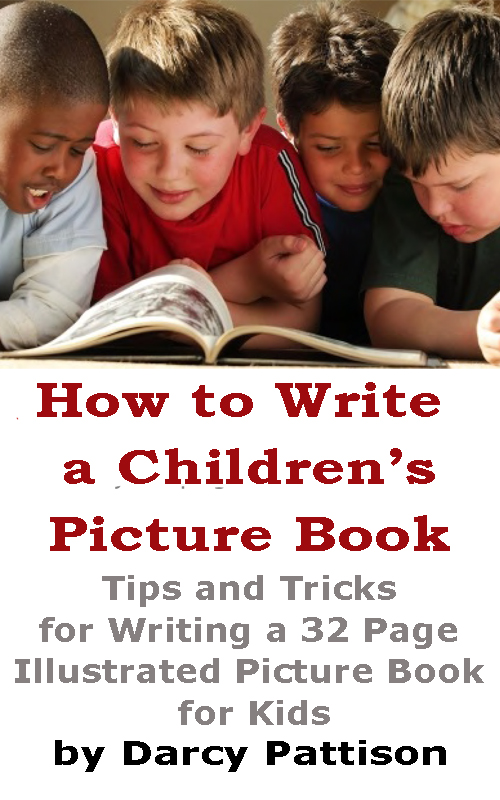

















Do you mind if I quote a few of your posts as long as I provide credit and sources back to your
website? My blog site is in the exact same area of interest as yours and my
users would really benefit from a lot of the information you provide
here. Please let me know if this okay with you. Thank you!
Sure, I don’t mind at all. I will have to come on over to see your blog! Plenty of room for everyone!
Can’t wait to see the final “creation.”
LOOOOOOVE this one!!! Gotta re-press!
Thanks! Love you!
It’s coming along! Very fun!
Greetings from Florida! I’m bored to death at work so I decided to check out your blog on my iphone during lunch break. I love the information you present here and can’t wait to take
a look when I get home. I’m shocked at how fast your blog loaded on my phone .. I’m not even using WIFI, just 3G .
. Anyhow, very good blog!
Thank you.
Great blog here! Also your web site loads up very fast! What host are you
using? Can I get your affiliate link to your host?
I wish my web site loaded up as quickly as yours lol
I don’t know. I just use WordPress. Not savvy on all the other stuff.